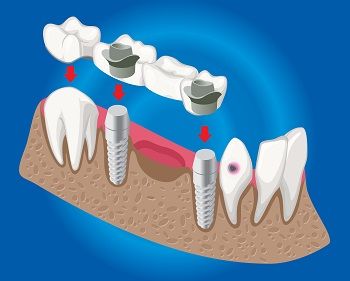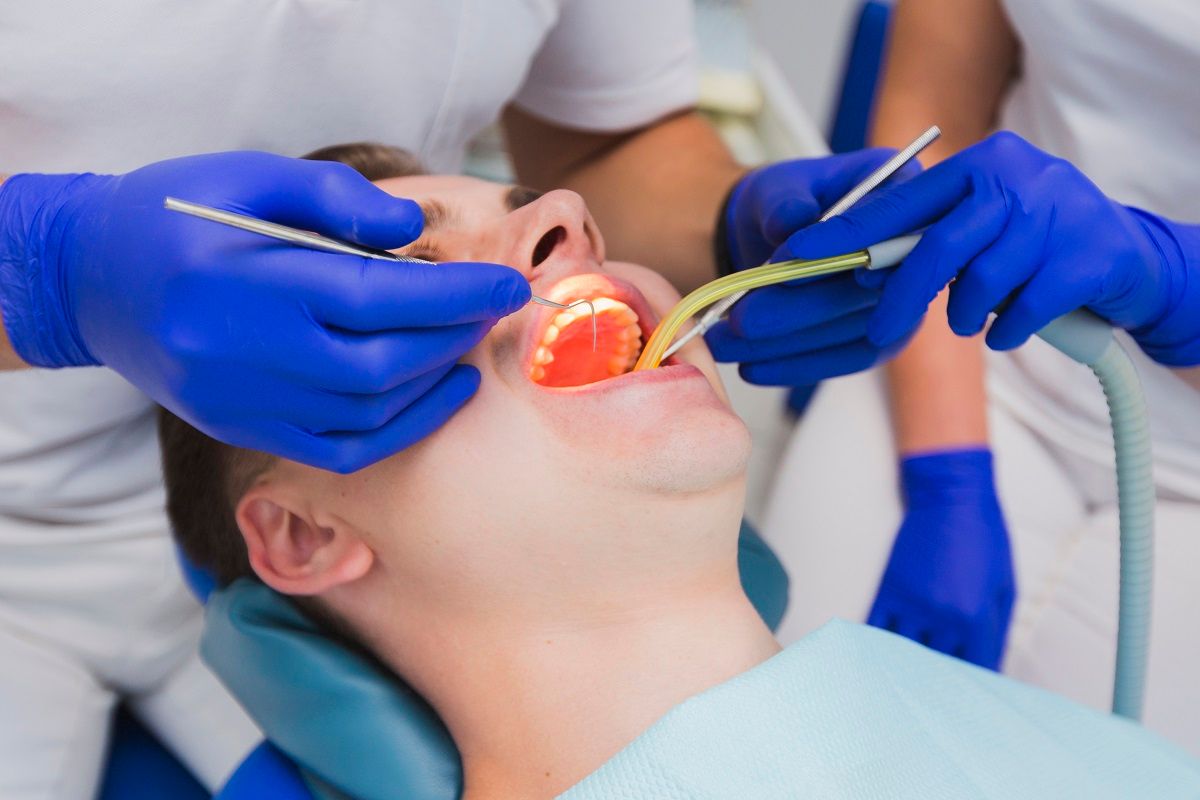Maintaining a healthy smile is essential for oral health and overall well-being. However, dental issues such as missing teeth can significantly impact one’s confidence and ability to chew correctly. Thankfully, modern dentistry offers a range of solutions to repair the appearance and functionality of a smile, and one of the most popular options is a dental bridge.
Suppose you are considering this procedure or want to learn more about it. In that case, this step-by-step guide will provide valuable insights into the dental bridge procedure and what to expect. So, let’s get started.
Bridging the Gap: Discovering the Dental Bridge Procedure
By bridging the gap, dental bridges not only enhance the aesthetics of your smile but also restore proper dental function and prevent complications that can arise from missing teeth, such as shifting adjacent teeth or jawbone deterioration.
The dental bridge procedure is a comprehensive process that involves several steps to restore missing teeth and rejuvenate your smile. Let’s explore various phases of a dental bridge procedure to be well-informed before the actual one.
Step 1: Initial Consultation:
The dental bridge procedure commences with an initial consultation with your dentist. During your appointment, the dentist will assess your oral health, examine the space where the tooth or teeth are missing, and determine if you are eligible for a dental bridge. The dentist will take X-rays or scans to assess the condition of the surrounding teeth and bone structure.
Step 2: Treatment Planning:
The next step is treatment planning once you are eligible for the dental bridge. At this stage, your dentist will discuss the various dental bridges available. Depending upon your oral health requirements and budget, the dentist will choose the most viable option to restore your smile.
Step 3: Tooth Preparation:
Before placing the dental bridge, the dentist will carefully shape and contour the neighboring teeth, called abutment teeth, on both sides of the space. It involves removing a thin enamel layer to create space for the dental crowns to hold the bridge. The dentist will also administer local anesthesia to ensure a comfortable patient experience at this step.
Step 4: Impression:
After the tooth preparation, your dentist will take an impression of the shaped teeth and the gap. This impression serves as a mold, accurately representing your teeth and allowing the dental laboratory to custom-create your dental bridge.
Step 5: Temporary Bridge Placement:
Dentists often use a temporary bridge to protect and maintain the functionality and appearance of the prepared teeth. This temporary bridge acts as a shield until the final bridge is ready to be placed, preserving the teeth’s integrity during the waiting period.

Step 6: Bridge Fitting and Adjustment:
After the fabrication of your permanent bridge, you will revisit the dental office to have it fitted. Your dentist will carefully check the bridge’s fit, shape, and color to ensure optimal comfort and aesthetics. If any adjustments are needed, they will be made at this stage to achieve a precise fit.
Step 7: Bridge Cementation:
Once the fitting is confirmed, your dentist will proceed with the bridge cementation process. The dental bridge is permanently fixed in place using dental cement. The abutment teeth will undergo preparation with a bonding agent, and the bridge will be carefully positioned and secured onto the prepared teeth.
Step 8: Final Touches and Aftercare:
At this step, your dentist will carefully make any necessary final adjustments to ensure a comfortable bite and proper alignment. This step is crucial in achieving optimal functionality and ensuring your new bridge feels natural and comfortable within your mouth.
The dental bridge procedure helps restore a complete smile’s appearance, functionality, and confidence by following these steps. However, each patient’s situation may vary, and the dentist may adjust these steps accordingly.
Remember to consult with your dentist for personalized guidance and address any questions or concerns regarding your specific dental bridge procedure.
“With optimal care, dental bridges can last significantly, typically 5 to 15 years or more. However, it’s important to note that a dental bridge’s lifespan usually depends on factors such as the patient’s oral hygiene practices, the quality of the materials used, and the integrity of the supporting teeth and surrounding structures”.
What To Expect After a Dental Bridge Placement?
After a dental bridge placement, there are several things you can expect as part of your post-procedure care and adjustment period. Here’s an overview of what to expect:
- Sensitivity and Discomfort: It is common to experience some sensitivity and discomfort around the treated area immediately after the bridge placement. This sensitivity typically subsides within a few days as your mouth adjusts to the new restoration. Over-the-counter pain medications can help manage any discomfort during this time.
- Adjusting to the New Sensation: As you become accustomed to the dental bridge, you may initially notice a slight difference in how your bite feels. If you continuously experience bite issues or discomfort, it’s essential to consult with your dentist for further evaluation.
- Oral Hygiene Practices: Maintaining excellent oral hygiene is crucial to the longevity and health of your dental bridge. Your dentist will provide specific guidelines on caring for your bridge, which may include regular brushing and flossing and using special tools to clean around and underneath the bridge. Proper oral hygiene helps prevent plaque buildup, tooth decay, and gum disease.
- Follow-up Appointments: Your dentist will schedule follow-up appointments to monitor the healing process and ensure the bridge functions correctly. These appointments allow one to address concerns or make necessary adjustments to optimize comfort and fit.
- Diet Considerations: Sticking to soft foods and avoiding hard or sticky foods is advisable initially. The latter may dislodge or damage the dental bridge, undermining your smile’s quality. However, as you become more comfortable with the bridge, you can gradually reintroduce a wider variety of foods into your diet.
- Long-Term Maintenance: Dental bridges are durable and can last many years with proper care. However, they may require periodic adjustments or repairs over time. Regular dental check-ups are essential to assess the condition of your bridge, monitor the health of your remaining teeth, and address any potential issues promptly.
- Improved Function and Aesthetics: One of the significant benefits of a dental bridge is the restoration of proper chewing function and aesthetics. With the bridge in place, you can expect improved speech clarity, enhanced ability to chew food, and a restored smile that looks natural and aesthetically pleasing.
Individual experiences may vary, and following your dentist’s specific post-procedure instructions is essential. By practicing good oral hygiene, attending regular check-ups, and addressing any concerns promptly, you can enjoy the benefits of your dental bridge for years to come.
Final Words
The dental bridge procedure offers a transformative solution for those seeking to restore missing teeth and enhance their oral health. With a comprehensive step-by-step guide, you now understand what to expect throughout this process.
From the first step to the final one and beyond, proper care and maintenance will ensure the longevity and success of your dental bridge. Embrace the opportunity to regain your smile’s beauty, improve functionality, and boost your confidence with a dental bridge. Take the initial step towards a brighter smile by seeking a consultation with your dentist in Pinole today.
Contact your Pinole dentist, Azadeh Hosseini, DDS, or Ghazal Hosseini, DDS, at Top Pinole Dental to learn more about the Dental Bridge Procedure.
Resource:
Pros And Cons Of Dental Bridges
*This media/content or any other on this website does not prescribe, recommend, or prevent any treatment or procedure. Therefore, we highly recommend that you get the advice of a qualified dentist or other medical practitioners regarding your specific dental condition.*
1500 Tara Hills Dr., Suite 104A, Pinole, CA 94564
Monday – Saturday 8:00 AM to 5:00 PM
